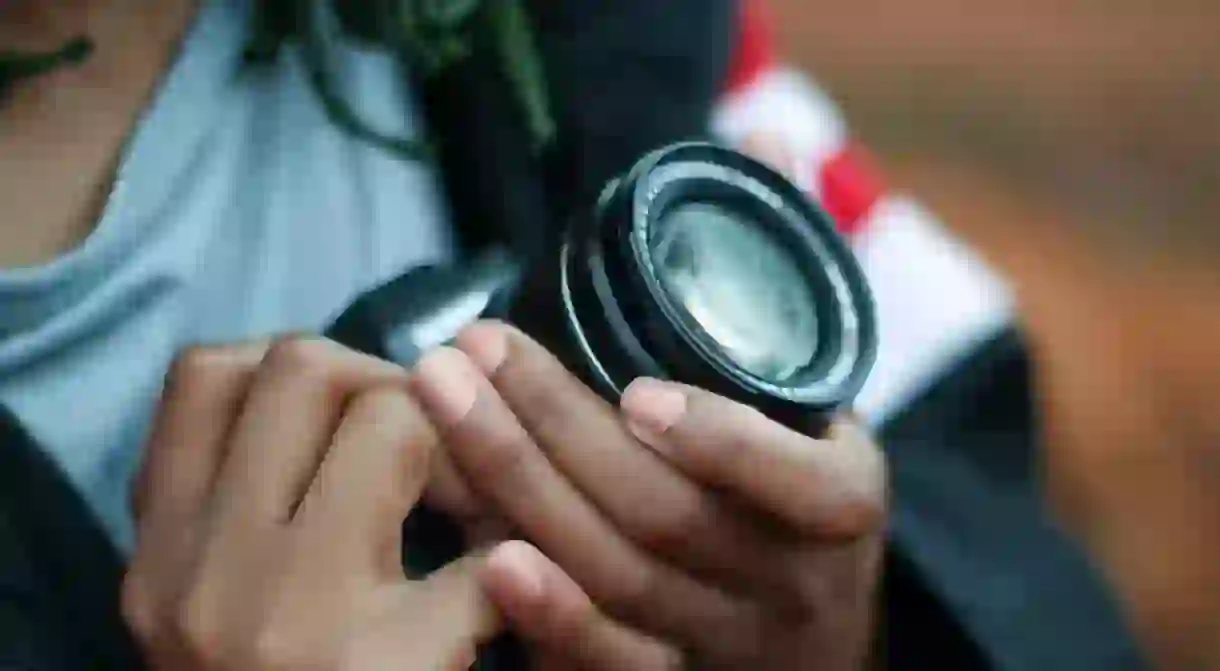13 Surprising Places Where Photography is Banned

Photographs are one of the best souvenirs. With just a click of a button you can immortalise your memories, the people you met and the places you loved. However, some of the most beautiful places in the world don’t allow photography and some will even fine you for breaking this rule. Find out where you won’t be able to snap away to your heart’s content.
Inside the Taj Mahal
Agra, India

The outside? Sure, snap away. But the inside is a tomb and it’s disrespectful to photograph it. There are strict rules dictating what you can and can’t capture inside, as well as guards to check that you’re not sneaking pictures.
Michelangelo’s David
Florence, Italy

You can stare at the magnificent statue up close, but if you have a camera around your neck, you can expect admonishment from guards who yell ‘No photo!’ with alarming regularity.
Jiangsu National Security Education Museum
Nanjing, China

Unless you’re a Chinese citizen, you’re not allowed to enter this spy museum. It houses spying equipment, gadgets and documents dating from 1927 and is considered to be too sensitive for foreigners to view. But even if you are allowed inside, you won’t be able to photograph what you see.
Jewel House (home of the Crown Jewels)
London, UK

No, not those crown jewels – although you might want to be careful if you’re photographing those as well. No-one is allowed to take pictures of this breathtaking array of jewels, which are protected by bombproof glass at the Tower of London. All visitors are watched by a beady-eyed array of guards and more than 100 security cameras, so don’t get any funny ideas.
Kumsusan Palace of the Sun
Pyongyang, North Korea

Before entering the mausoleum of Kim Il-sung and Kim Jong-il, visitors must check-in all their belongings apart from their wallet. They must then walk through a dust-blowing machine to ensure no dust is carried into the room where the former heads of state lie in their transparent crystal sarcophagi. Photography definitely isn’t allowed.
The Sistine Chapel
Vatican City, Rome, Italy

You might think that the frequent cries of ‘No photo! No video!’ heard in the Sistine Chapel might be because it’s a sacred space – and you’d be partly right. But it’s also down to the fact that Japan’s Nippon Television Network Corporation paid for the restoration of the artworks 20 years ago and won the exclusive rights to photographing and videoing the chapel, and the photography ban remained despite the fact that the $4.2 million restoration project is now finished.
Uluru-Kata Tjuta National Park
Northern Territory, Australia

Although it’s one of Australia’s most famous landmarks, you’re not allowed to photograph Ayers Rock for commercial use – which can include social media. The Anangu, the traditional Aboriginal owners of the Uluru-Kata Tjutu park, believe that some certain sites, ritual objects and ceremonies are restricted to people who may ‘properly’ view them, with some restricted to restricted women and others to men, and that some stories can be spoken but not written or filmed. They believe their culture is degraded if images of sacred sites are captured or displayed, or if images of the park are used to advertise or promote products and services that don’t promote natural and cultural values of the park.
While no-one will stop you from snapping a quick iPhone pic that won’t be shared anywhere, if you take any professional equipment such as a tripod (or even professional-looking, like an SLR), you can expect to be scolded, as you need permission to take professional photos, let alone distribute them.
Valley of the Kings
Luxor, Egypt

Everyone who enters these famous tombs and monuments is searched, and if you do sneak a camera in and take photos inside, you risk a E£2,000 (US$115) fine.
Golden Gai
Shinjuku, Tokyo, Japan

This tiny network of alleyways houses around 290 bars, some seating as few as six people. It’s a relic from old Tokyo and is a great place to experience a traditional Tokyo night out. You’re not supposed to take photos of the alleyways, however. This is most likely a hangover from the time when prostitution was common in the area.
The Alamo
Texas, US

Considered to be a shrine to the liberty of Texas, no photos are permitted inside the historic building. You must also lower your voices when speaking, and gentlemen should remove their hats.
Westminster Abbey
London, UK

The church believes that the integrity of the building would be damaged with the distraction that widespread photography brings – but it does have a gallery of photos on its website that you can download for personal use.
The Library at the Abbey of Saint Gall
St. Gallen, Switzerland

Founded in 719, this is one of the oldest libraries in the world and has manuscripts dating from before the year 1,000. Guards ensure that you don’t bring your camera inside and you must wear soft shoes to protect the floors.
Eiffel Tower
Paris, France

No, we’re not crazy – when the Eiffel Tower is lit up at night, it’s classed as an art installation and so is protected by copyright. This means you’re not supposed to post photos of it online, or distribute them commercially. Consider posting that Instagram of a daytime shot instead, maybe?













